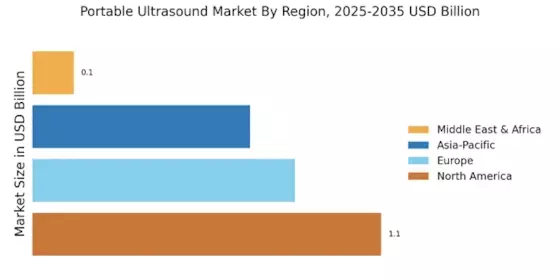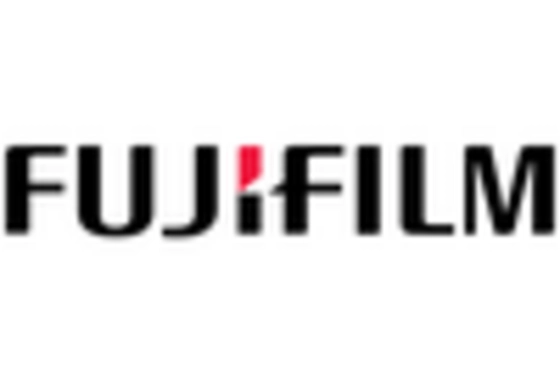Rising Demand for Home Healthcare
The Portable Ultrasound Market is witnessing a notable increase in demand for home healthcare solutions. As populations age and chronic diseases become more prevalent, there is a growing need for medical devices that can be used outside traditional clinical environments. Portable ultrasound devices offer the flexibility and convenience required for home-based care, allowing healthcare professionals to conduct examinations in patients' homes. This trend is supported by data indicating that the home healthcare market is expected to reach USD 515 billion by 2027. Consequently, the Portable Ultrasound Market is likely to benefit from this shift towards decentralized healthcare delivery.
Expansion of Telemedicine Services
The Portable Ultrasound Market is significantly influenced by the expansion of telemedicine services. As healthcare providers increasingly adopt telehealth solutions, the need for portable diagnostic tools that can be used remotely becomes more pronounced. Portable ultrasound devices can be integrated into telemedicine platforms, allowing healthcare professionals to conduct remote assessments and consultations. This integration not only enhances patient access to care but also streamlines workflows for providers. The telemedicine market is projected to grow substantially, which bodes well for the Portable Ultrasound Market as it aligns with the ongoing trend of digital health transformation.
Technological Innovations in Imaging
The Portable Ultrasound Market is experiencing a surge in technological innovations that enhance imaging capabilities. Advanced features such as 3D imaging, Doppler ultrasound, and artificial intelligence integration are becoming increasingly prevalent. These innovations not only improve diagnostic accuracy but also facilitate quicker decision-making in clinical settings. The market for portable ultrasound devices is projected to grow at a compound annual growth rate of approximately 8.5%, driven by these advancements. As healthcare providers seek to improve patient outcomes, the demand for high-quality imaging solutions continues to rise, positioning the Portable Ultrasound Market for substantial growth.
Cost-Effectiveness of Portable Devices
Cost considerations play a pivotal role in the Portable Ultrasound Market. Portable ultrasound devices are generally more affordable than their stationary counterparts, making them accessible to a broader range of healthcare facilities, including small clinics and rural hospitals. The average cost of portable ultrasound machines has decreased significantly over the past few years, which has contributed to their adoption in various healthcare settings. This cost-effectiveness is particularly appealing in regions with limited healthcare budgets, where portable devices can provide essential diagnostic capabilities without the financial burden associated with traditional systems. As a result, the Portable Ultrasound Market is likely to see increased penetration in cost-sensitive markets.
Growing Awareness of Preventive Healthcare
The Portable Ultrasound Market is benefiting from a growing awareness of preventive healthcare among patients and providers alike. As healthcare systems shift focus from reactive to proactive care, the demand for diagnostic tools that facilitate early detection of medical conditions is on the rise. Portable ultrasound devices enable timely assessments, which can lead to better health outcomes and reduced long-term healthcare costs. This trend is reflected in the increasing number of preventive health screenings being conducted globally. Consequently, the Portable Ultrasound Market is poised for growth as healthcare stakeholders recognize the value of early intervention.


















Leave a Comment